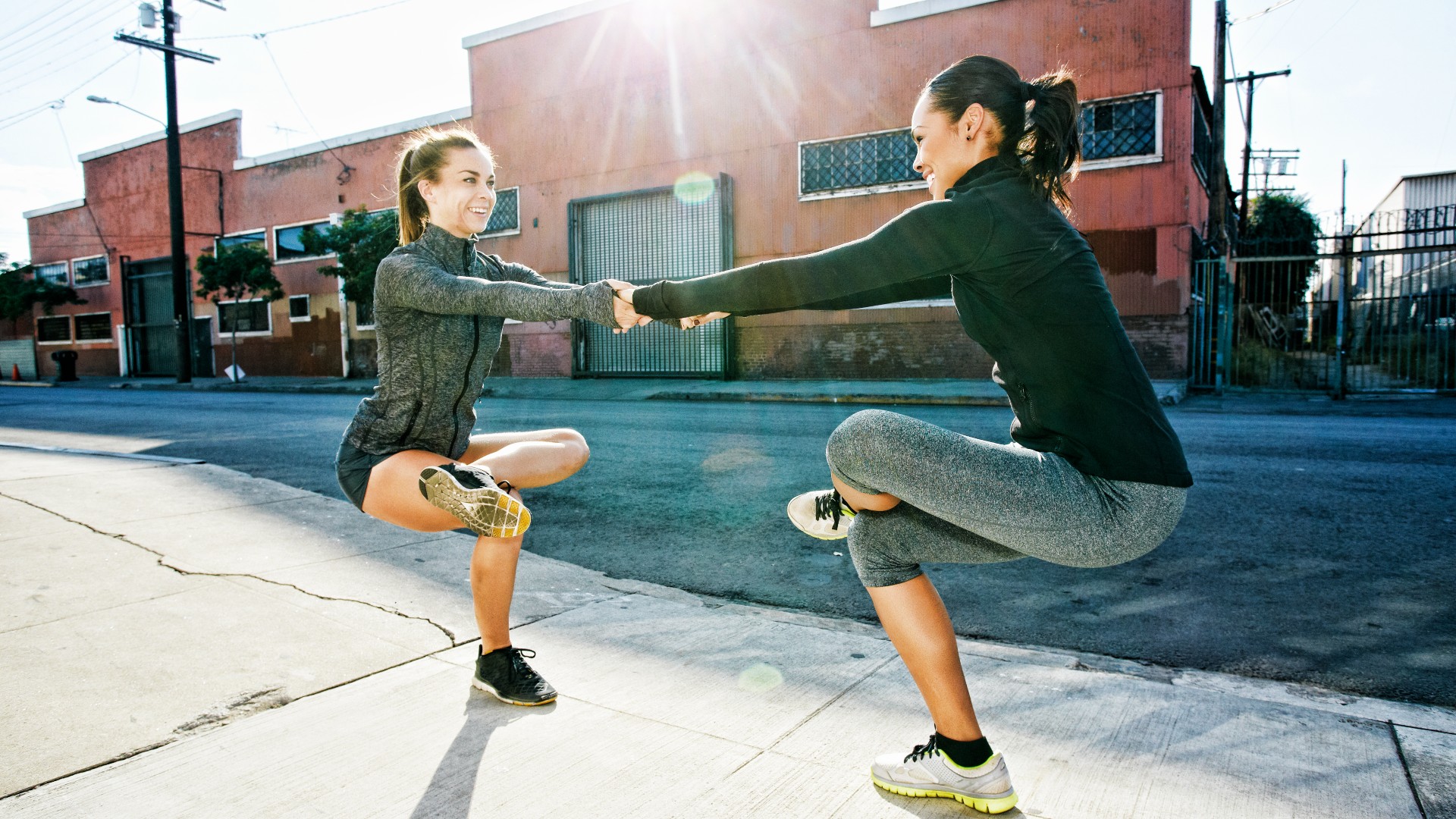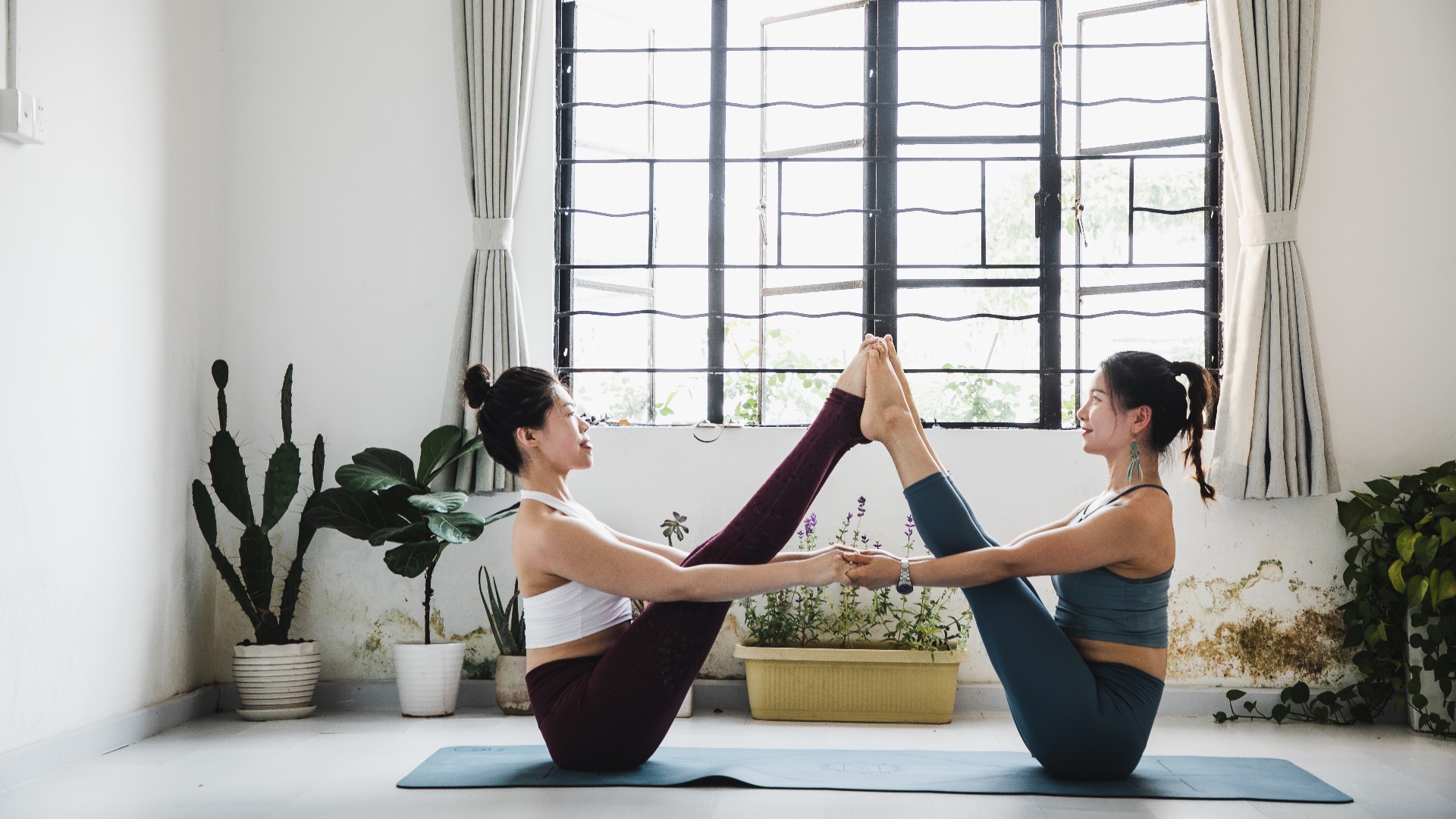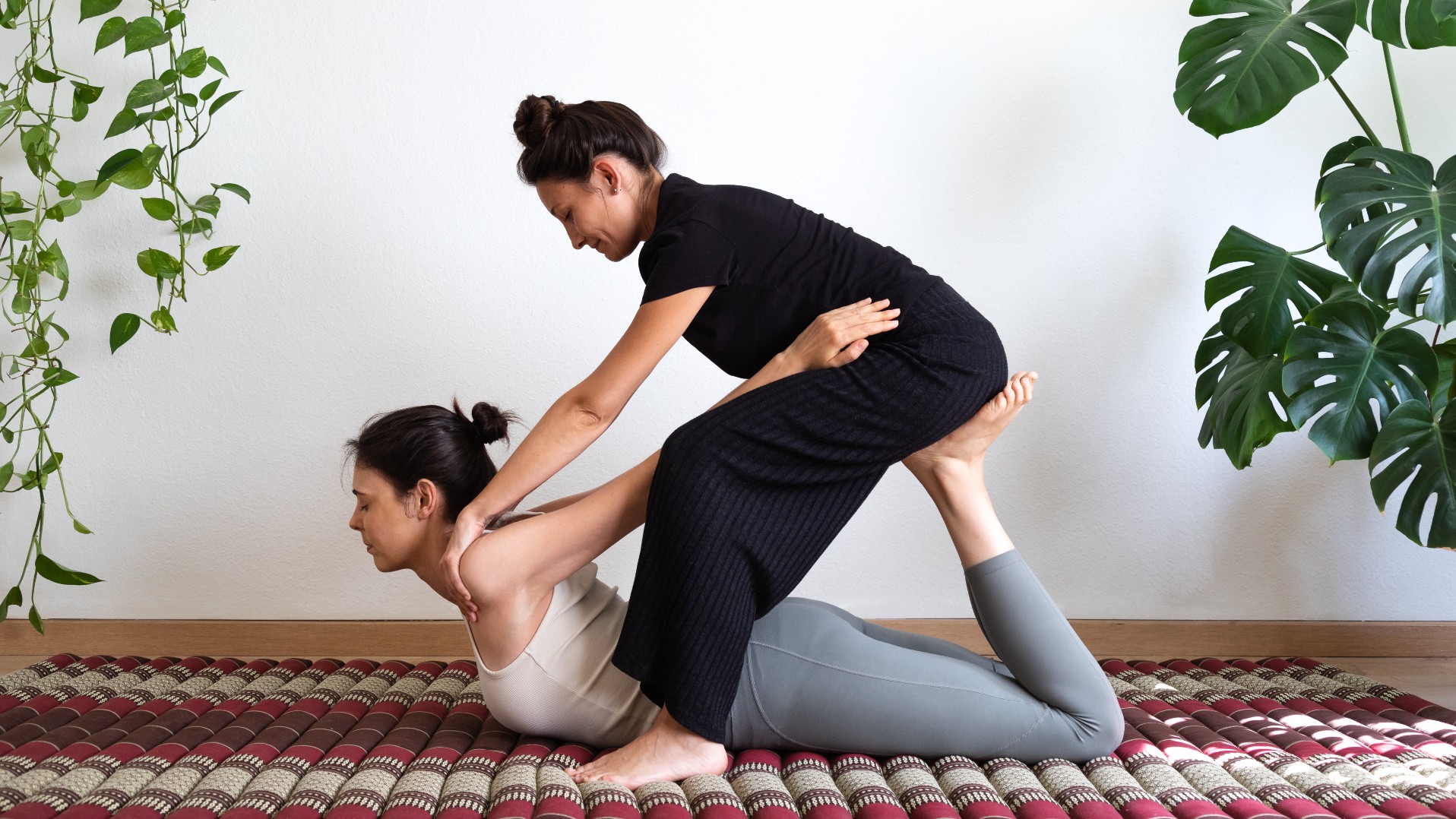Put down your foam roller — these 3 assisted stretches develop flexibility and strength without equipment
If you plan to stretch out sore muscles after your workouts, assisted stretches are one of the best ways, alongside foam rolling, to help them out. But if you haven’t got a foam roller, just grab any stable surface like a wall or floor and give these three assisted stretches a go.
The benefits of assisted stretching are worth the deep breaths and wishing it was all over. You can expect better flexibility, mobility, strength, and posture, and stretching pre and post-exercise also helps your body prepare or recover properly for exercise while reducing the risk of injury.
And you don’t need to be a bendy yogi or super flexible gymnast to do them. However, having a workout partner on standby could help you carefully and gradually move more deeply into stretches and achieve more from them. Whether you’re a beginner or not, these assisted stretches were cherry-picked for a hands-on standalone stretching routine or post-workout cool-down. Research (opens in new tab) even shows that assisted stretching could improve your muscle function over time.
Grab a friend, one of the best resistance bands for strength programs, cardio workouts, and stretching sessions, or any stable surface, and get ready to work most of your muscle groups without a foam roller in sight.
If you’re new to exercise or currently managing an injury, check with a qualified medical professional before undertaking any assisted stretches and stop immediately if you experience pain.
Assisted stretches to target your entire body
1. Standing pigeon pose

Pigeon pose is a popular yoga pose that targets the muscles in your lower back, hips, glutes, and the deep gluteal muscle — the piriformis. The standing variation of this pose activates the muscles in your lower back and legs, including your quads, hamstrings, and calves. The move trains the body to balance and requires engagement from your core muscles to stabilize your torso and keep you upright.
Stretching the muscles around your knee and hip joints in your lower body helps develop strength and flexibility and improve your movement quality. Learning better movement patterns will help you move more efficiently during workouts and improve everyday functional performance. But doing it alone can be tricky if you struggle with your balance — which is where a buddy or stable surface comes in.
Regardless of what you use to balance, try to keep your core engaged, back flat, and chest lifted. If you have tight hip flexor muscles, practice bending your knee and sending your hips down, keeping weight on your heel with your thigh parallel to the ground.
How to do supported pigeon pose:
- Stand facing opposite your partner and place your hands on each other’s shoulders or grip their arms
- Place your left foot over your right knee just below your ankle
- Try to create a 90-degree angle with your left leg without forcing your knee outwards
- Slowly bend your right knee and lower your hips towards the floor until your thigh is parallel to the ground
- Keep your weight in your right heel, hold the stretch, then swap legs.
2. Supported boat pose

Supported boat pose is great for developing lower-body flexibility if you have tight hamstrings. It’s a yoga balance that builds core strength and targets your hip flexor muscles, hamstrings, quads, arms, and lower back. Unlike the balance version, the assisted stretch requires pressing your heels into a wall or your partner’s heels opposite you and trying to straighten your legs, stretching the hamstrings and calves.
Although dynamic stretches help warm your muscles and improve range of motion, static stretching for over 15 seconds could boost your flexibility and improve muscle function. You might notice improvements in range when you work out, especially around your hips and down the backs of your legs.
How to do supported boat pose:
- Sit facing your partner and press the heels of your feet together
- Keep your hands on the floor and slowly extend your legs
- Lean back slightly while engaging your core
- Keep your stomach braced, shoulders retracted, and spine tall with your chest lifted to maintain good form and protect your lower back
- Bend your knees and press your feet into a wall or your partner’s feet for extra support.
3. Prone chest stretch

Granted, it hardly looks inviting, but a prone chest stretch releases tension in your pectoral muscles, anterior deltoids (fronts of the shoulders), arms, and mid-lower back while stretching out your abdominal muscles as a bonus.
Tight and shortened chest and shoulder muscles are one of the most common causes of hunching. According to research on upper crossed syndrome (opens in new tab), the back muscles in your neck and shoulders become overactive and strained (due to poor posture), and the surrounding counter muscles become weaker. The rhomboids and lower trapezius muscles in your back will also weaken, so stretching the front of your body and strengthening the back muscles can help improve posture.
How to do a prone chest stretch:
- Lay on your stomach with your thighs supported on the ground
- Ask your partner to stand over you and lightly grip the fronts of your shoulders
- Place your hands on their outer hips and rest your feet on their bum
- Take a deep breath. As you exhale, allow your partner to pull you back and up until your chest lifts off the ground. Hold and repeat.
If you’re happy for your mate to sit on your feet, this one will give you a big release, but you could also rest your legs and grip a resistance band behind your back to achieve the same stretch. No band? Try grasping your ankles instead!
Fancy learning how to boost your recovery? I did yoga every day for two weeks, here’s what happened to my body, I tried stretching with StretchLab, and I’m a personal trainer and I swear by these stretches to relieve tight shoulders. Also, do this lower back stretch every day to help with back pain.
For all the latest Technology News Click Here
For the latest news and updates, follow us on Google News.
